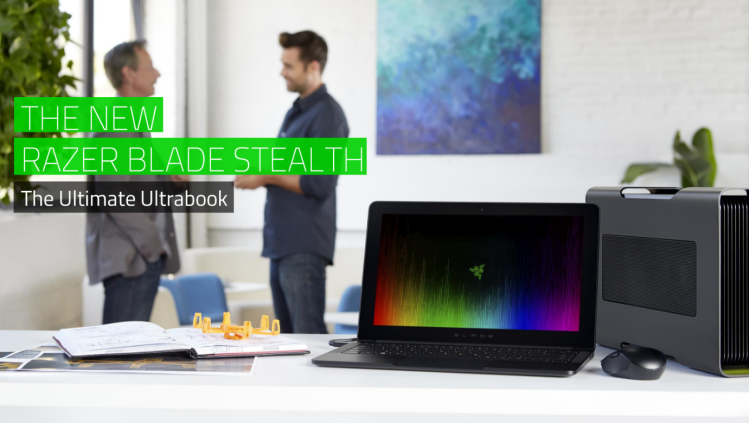Razer isn’t hesitating to embrace the newest chips from Intel.
The hardware company revealed this morning that it is stuffing a 7th-generation Intel Core i7 processor into its Razer Blade Stealth ultrabook. This product refresh will keep the same chassis, but Razer engineers are using this opportunity to also cram more battery and memory into the system. The Blade Stealth comes with a battery that is 15-percent larger than its predecessor, and four of the five available models will have 16 GB of RAM. The idea is to make the system even faster while it is also more efficient without changing anything that made the Stealth a system that impressed us so much the first time around. It still starts at $999, and it is still less than 3 pounds at only 0.52 inches.
The updated Stealth is shipping now with the i7. For Intel, this is one of the first systems to hit the market with its Kaby Lake chips. Like the previous two generations, it is still a 14nm process, so it’s not a massive leap forward in terms of how the metal works. Intel, however, is finding extra performance elsewhere — the company is referring to it as “14nm+.” Some of the biggest improvements will come to anyone who watches Ultra HD video.
“The new 7th Generation Intel Core processor takes mobile computing performance to the next level while also delivering all new media capabilities for an unmatched 4K UHD experience,” Intel mobility-client boss Chris Walker said in a statement. “The new Razer Blade Stealth leverages the efficient performance of 7th Gen Intel Core to give people the power they need to create, watch, and play at full capacity in a beautiful and ultra-portable design.”
Stealth is still primarily a work machine. It doesn’t have a discrete GPU, but with the new i7 and Intel’s HD Graphics 620 should ensure it matches up better than ever against competitors like the Macbook Air, Dell XPS 13, and HP’s Spectre 13. That’ll be especially true if the battery is as improved as Razer claims.
“The first Blade Stealth offered an unparalleled combination of performance, personalization and value, with standard features that our competitors could not match in their higher-priced luxury models,” Razer chief Min-Liang Tan said in a canned statement. “Our engineers have done the impossible by making our second generation Ultrabook even more powerful while improving the battery life significantly. The Razer Blade Stealth is an example of what an Ultrabook can and should be able to do.”
VentureBeat's mission is to be a digital town square for technical decision-makers to gain knowledge about transformative enterprise technology and transact. Learn More

